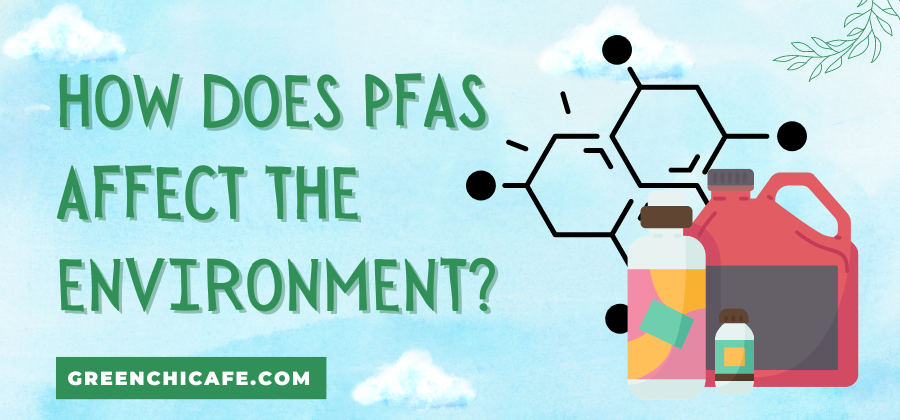PFAS (per and poly-fluoroalkyl substances) have become ubiquitous environmental contaminants.
These persistent chemicals accumulate in nature and living organisms, causing ecological harm.
This article explores how PFAS enter and spread through the environment, their health effects, and the significant dangers they pose.
How Does PFAS Affect the Environment?

PFAS contamination poses severe threats to environmental and human health through pollution of air, soil, and water.
PFAS persist indefinitely, accumulate in organisms, spread globally, and cause developmental, immune, and hormonal damage.
Addressing PFAS pollution before it grows further is crucial.
Key Points
- PFAS are extremely persistent “forever chemicals” that accumulate over time.
- They contaminate soil, surface water, groundwater, and drinking supplies.
- PFAS cause developmental, reproductive, and immunological harm to organisms.
What Are the Major Sources of PFAS Pollution?

PFAS enter the environment through industrial discharges and emissions, as well as leakage from landfills.
They are released during production and use of stain-resistant, waterproof, and nonstick consumer products.
Major sources include textile treatment, paper coatings, surfactants, aviation fluids, and aqueous firefighting foams used on military bases.
PFAS also comes from chrome plating facilities, oil refineries, and plastic manufacturing.
Municipal wastewater treatment plants are another pathway for PFAS pollution entering waterbodies.
Why Are PFAS Called ‘Forever Chemicals’?
Unlike most contaminants, PFAS resist breakdown due to their extremely stable carbon-fluorine bonds. They persist indefinitely in the environment instead of decomposing.
For example, the half-life of PFOA (perfluorooctanoic acid) is over 90 years. And PFHxS (perfluorohexane sulfonic acid) has a half-life exceeding 41,000 years!
This extreme longevity allows PFAS to bioaccumulate in organisms and persistently cycle through the environment.
Hence the nickname ‘forever chemicals’.
How Does PFAS Spread Through the Environment?
PFAS move readily through air, soil, surface water, and groundwater.
Atmospheric transport spreads PFAS through particle-bound movement and precipitation washout.
Runoff moves PFAS into surface waters, where they contaminate drinking supplies and bioaccumulate aquatic food chains.
PFAS infiltrate soils at application sites, then migrate to groundwater aquifers.
This facilitates human exposure through drinking water.
PFAS also enter landfill leachate and wastewater effluent, further dispersing them.
What Are the Health Effects of PFAS Exposure?
Studies link PFAS exposure to developmental toxicity, liver damage, thyroid disease, decreased immunity, and certain cancers.
Even small doses bioaccumulate over time.
Documented effects include increased cholesterol, reduced vaccine response, changes in liver enzymes, decreased fertility, and testicular cancer.
Young children are especially vulnerable.
EPA health advisories exist for PFOA and PFOS in drinking water.
Further research is urgently needed to fully characterize PFAS health risks.
How Does PFAS Affect Wildlife and Ecosystems?
PFAS harms wildlife through bioaccumulation up the food chain.
Animals like fish, seals, and mink accumulate PFAS, then are consumed by other wildlife.
PFAS reduces the hatching success of birds and amphibians.
Developmental and hormonal effects occur across species.
PFAS pollutes surface waters, harming aquatic ecosystems.
Soil contamination damages microbial communities and terrestrial habitats.
Overall biodiversity and ecosystem function decline in areas of PFAS pollution.
Can PFAS Contamination Be Cleaned Up?
PFAS remediation is extremely challenging.
These persistent chemicals resist traditional cleanup methods.
Pump-and-treat removes contaminated groundwater but is costly over decades.
Excavation of soil removes PFAS but requires safe disposal.
Granulated activated carbon filters absorb PFAS from water but require frequent replacement.
Incineration fully destroys PFAS above 1000°C but creates toxic byproducts.
Emerging remediation technologies like plasma, ultrasound, and electrochemical oxidation hold promise but remain unproven at scale.
Avoiding further PFAS pollution is critical.
How Widespread is PFAS Contamination?
PFAS contamination is widespread globally.
Over 200 sites have been identified across 43 U.S. states.
Drinking water for up to 110 million Americans likely contains some PFAS.
All people tested have quantifiable PFAS blood serum levels.
Wildlife across the remote Arctic carry PFAS loads. Oceans, rivers, soil, and atmosphere all show expanding PFAS pollution.
Even most compostable food ware contains PFAS.
These ‘forever chemicals’ already circulate ubiquitously through the environment worldwide.
What Problems Are Caused by PFAS?
PFAS causes multiple ecological and health problems:
Bioaccumulation in wildlife and humans, accumulating over lifetimes to toxic levels
Developmental effects like decreased fertility, hormone disruption, and developmental delays
Liver toxicity, thyroid disease, weakened immunity, and testicular and kidney cancers
Widespread persistent pollution of soil, surface, and groundwater, and drinking water supplies
Harm to aquatic organisms and animals higher on the food chain through bioaccumulation
Atmospheric transport spreading PFAS globally via precipitation and particle-bound movement
Extremely challenging and costly cleanup of PFAS once released into the environment
In summary, PFAS are highly problematic pollutants due to their toxicity to organisms, persistence in the environment, accumulation in biota, mobility through air and water, and severe ecological and health consequences.
Key Takeaways
- PFAS pose a severe threat through their persistence, mobility, bioaccumulation, and toxicity. Understanding and preventing further PFAS pollution is crucial to protect environmental and human health.
FAQ
What are Bioaccumulative Chemicals?
Bioaccumulative chemicals build up in living organisms over time faster than they are metabolized or excreted. PFAS are highly bioaccumulative and accumulate up food chains.
How Do PFAS Enter Drinking Water?
PFAS infiltrates ground and surface water through runoff, wastewater effluent, and leaching from contaminated soils. This pollutes tap water drawn from reservoirs, rivers, lakes, and aquifers.
Can PFAS Be Removed From Water by Boiling?
No, PFAS cannot be removed from water by boiling, filtration, or disinfection. Only specially designed treatment systems like GAC adsorption or reverse osmosis remove PFAS from drinking water.
GreenChiCafe stays up-to-date on emerging environmental contaminants like PFAS.
Visit our website to learn more about keeping your local ecosystems healthy.
